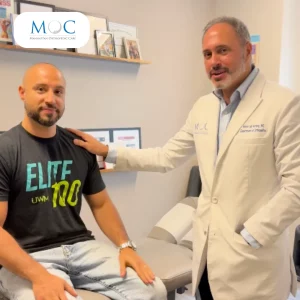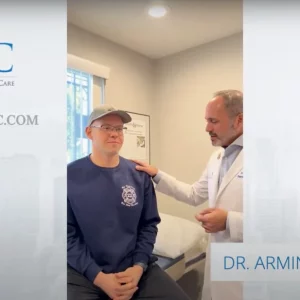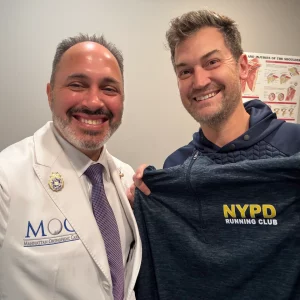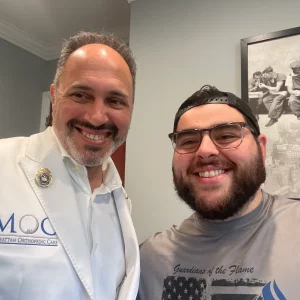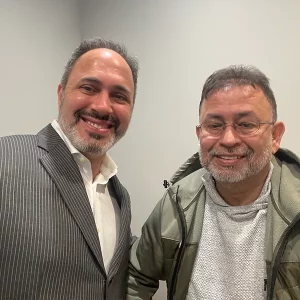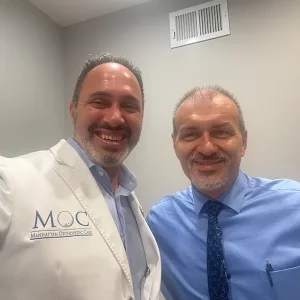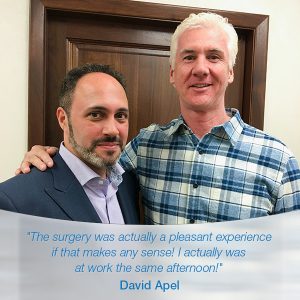Boguste Hamieye had a patellar dislocation reconstruction at Manhattan Orthopedic Care. Dr. Armin Tehrany, one of the top New York orthopedic surgeons, successfully performed the surgery, enabling Boguste to return to his favorite sports activities.
“He drove 3-4 hours from Pennsylvania to see me for a kneecap dislocation reconstruction. He is doing very well and he is also returning to sports.”

Patellar dislocation reconstruction is a knee surgery performed to surgically correct the patellar stability. In most patients, the procedure is performed arthroscopically which significantly alleviates the recovery process.
This knee condition is typically caused by a twisting injury to the knee joint that results in dislocation of the kneecap. Sports players with super-fast movements that include sudden changes of direction are exceptionally prone to patellar dislocation.
The main role of the patella is to transmit the power from the quadriceps to the lower leg through the patellar tendon. In severe cases of patellar dislocation, the ligament that normally guides the patella into this routine is torn which significantly impacts the knee stability.
Along with the tear of the patellar tendon, additional injuries may also occur. As the patella moves to the outside, the articular cartilage may be injured by a shearing mechanism. In extremely severe cases, a loose piece of the cartilage can also be torn off and it can easily get caught in the knee producing knee catching and locking resulting in further damage to the knee.
For patients who suffer this condition for the first time, the treatment is usually a non-surgical one. In such cases, the treatment includes a short immobilization period followed by a physical therapy tailored to enable a smooth process of regaining the motion range and knee strength.
The surgical treatment is recommended in cases where loose pieces of bone or cartilage are floating in the knee. Knee arthroscopy is the most recommended type of procedure for a successful removal of the loose pieces. In these cases, the recovery is quite quick and very similar to the non-surgical treatment. However, physical therapy is necessary for a longer period in order for the patient to regain the range of motion and knee strength.
Most patients successfully recover from the patellar dislocation reconstruction. However, the level of success mostly depends on the patient’s ability to truly understand the importance of the rehab period. Moreover, patients also need to understand that even during and after their recovery period, they need to perform regular exercises in order to maintain food control over their lower extremities in order to prevent future patellar dislocations.















